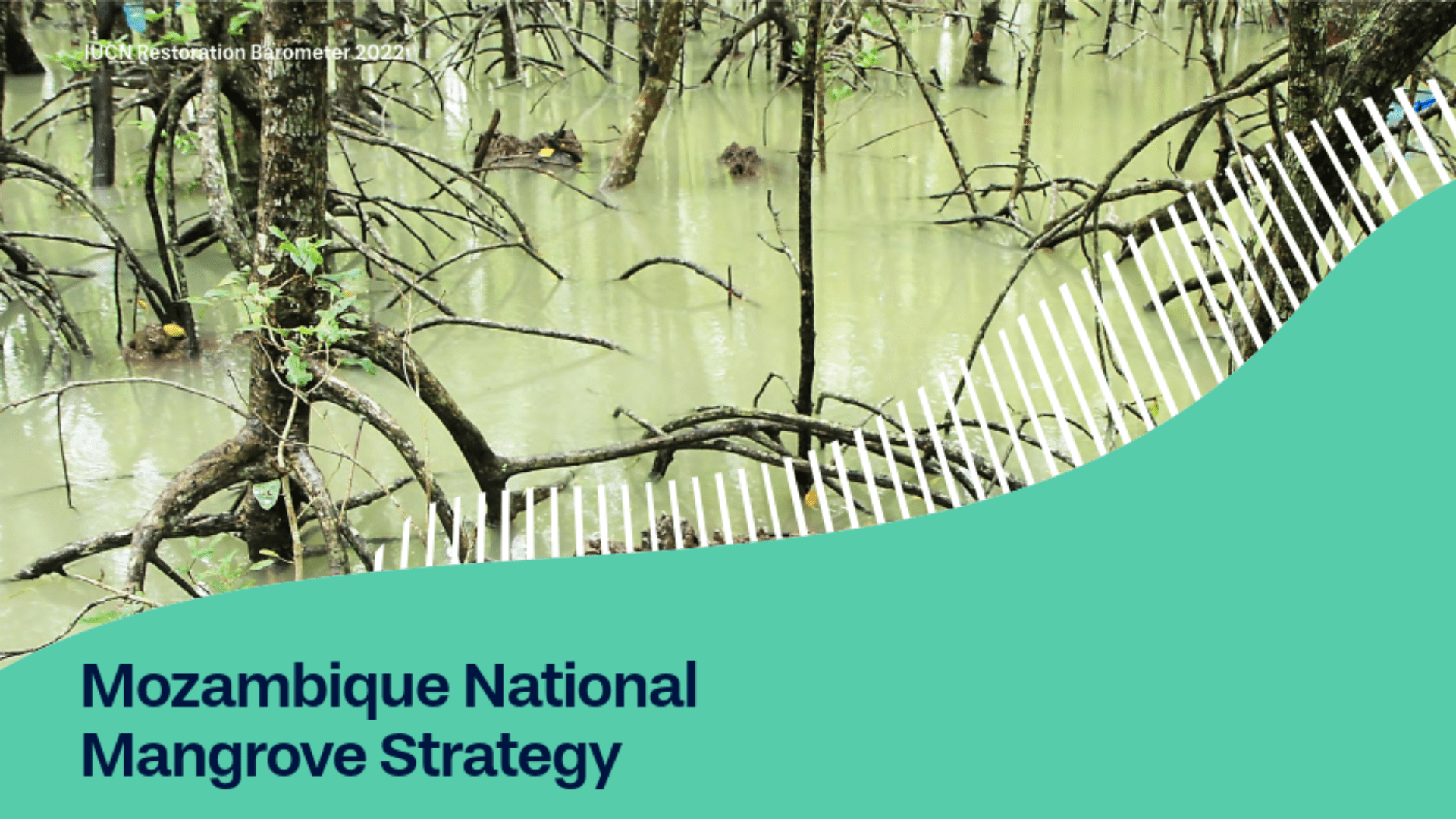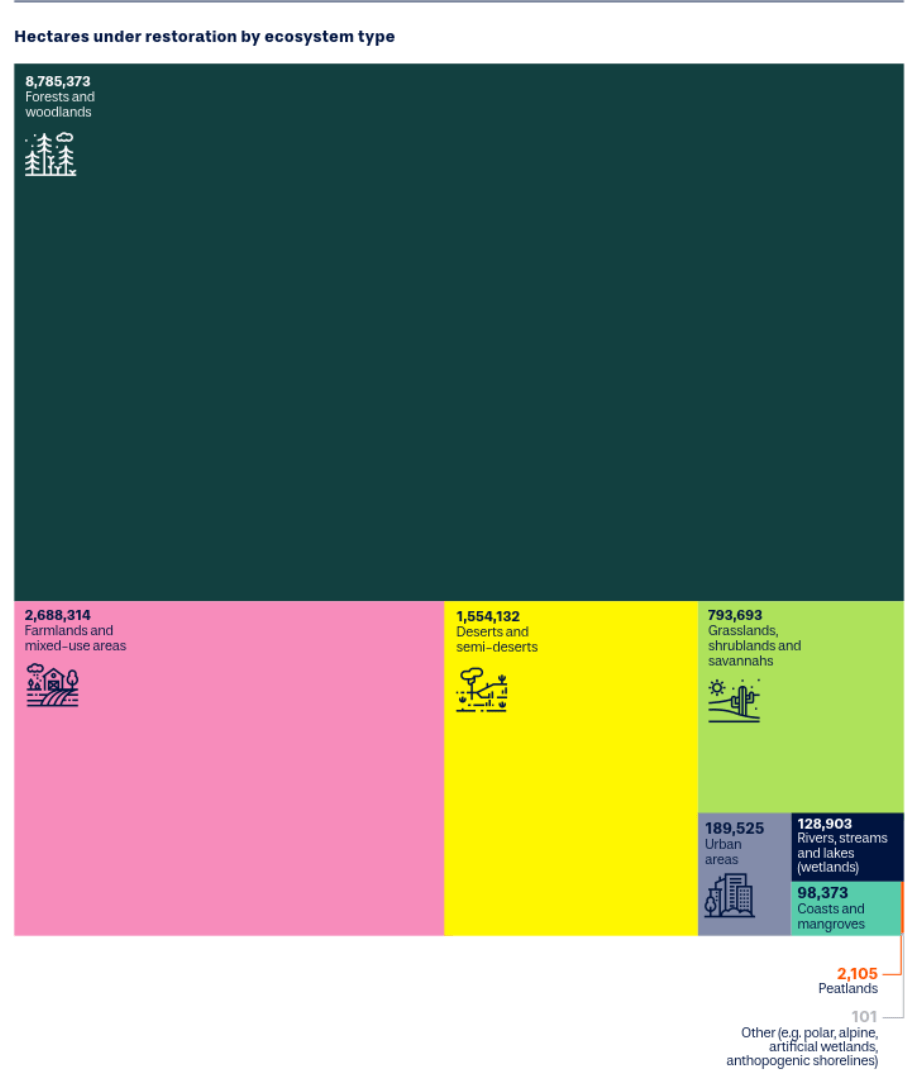Taking Measure of Restoration
IUCN's 2022 Barometer Report
The International Union for Conservation of Nature (IUCN) has published its first Restoration Barometer report, documenting that investments of $26bn across 18 countries have brought 14 million hectares of degraded landscapes – an area about the size of Greece – under restoration.
The Restoration Barometer follows the types of actions or interventions outlined in the IUCN Restoration Intervention Typology for Terrestrial Ecosystems. This builds on the IUCN Ecosystem Typology 2.0 which categorizes ecosystem types, as well as the ecosystem categories identified in the UN strategy for the Decade on Ecosystem Restoration. The results of this report show good news for people and for addressing climate change—through restoration efforts in these 18 countries, 12 million jobs were created and over 145 million tons of carbon were sequestered in 2022.
People, communities, institutions and others, including in the case of the Barometer national or sub-national governments, must carefully consider what can and needs to be put in place to best facilitate restoration. The “Laying Foundations” section highlights some of the various approaches that countries are taking to lay the foundations for their restoration efforts, including mangrove restoration under the “mangroves and coasts” ecosystems category. The work of two countries to restore their mangrove ecosystems, and thereby protecting people, biodiversity, and climate, are highlighted in the report and are summarized below.

© IUCN
Spread over a large number of territories, Mozambique’s mangroves have been reducing at a rate of 18.2km2 per year over the past few decades— largely due to tourism along with urban and industrial development.3 To address this, in May 2020, the national government of Mozambique formally cemented the Mangrove Management Strategy 2020-2024 into policy.
5,000 hectares were targeted for restoration by 2022 through the Strategy and, following its establishment, the Mozambique government introduced the National Mangrove Restoration Program focused on its effective implementation.
As of June 2022, over 75% of the 5,000 hectares target had been successfully met, with enhanced momentum to reach 100% by end of year

© IUCN
Bangladesh is among the most vulnerable in the world to climate change-induced natural disasters such as cyclones and floods,23 with conservative estimates suggesting that 25 million people could be displaced from the coasts by 2050.
In 2017, Bangladesh committed to restore 0.75 million hectares under the Bonn Challenge…To monitor the implementation of mangrove restoration and sustainable management of the coastal ecosystems, the Mangroves for the Future (MFF) platform – a collaboration between IUCN and UNDP – is used in Bangladesh.
To date, MFF has supported the rehabilitation of 125 hectares of mangroves through its small and medium grants, which support initiatives that provide practical, hands on demonstrations of effective coastal management in action. This has helped provide shelter from storms for nearby villages, as well as habitat and nursery functions for fish and birds.

Figure illustrating restoration by ecosystem type. Coasts and mangroves are at 98,373 across the countries surveyed for this report. © IUCN
One of the biggest challenges for mangrove restoration is keeping replanted forest alive in the long-term. To address this, the Global Mangrove Alliance will be publishing the Mangrove Restoration Tracker Tool in the coming months. The goal of the tool is to further restoration targets around the world by making restoration action more accessible and successful. Subscribe to the Alliance newsletter, below, and follow us on LinkedIn for the latest information on the publication of this tool. Meanwhile, more details on the tool is available in The State of the World’s Mangroves 2022 report.